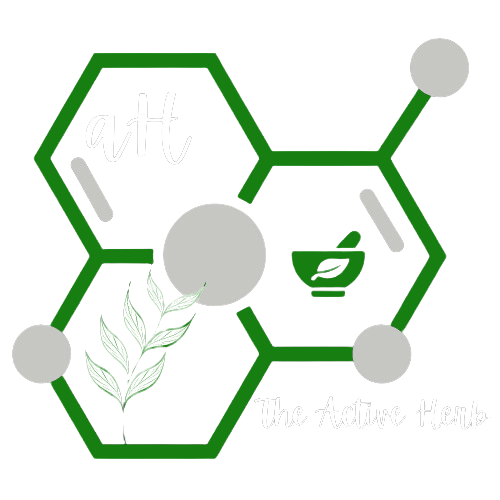Oil of Oregano: A Small Bottle with Big Botanical Benefits
By Dr. Aisha Hill-Hart | The Active Herb
Oregano isn’t just for seasoning your favorite meals. When extracted and formulated correctly, it becomes a concentrated herbal powerhouse known as Oil of Oregano—a staple in many natural wellness routines for seasonal support, balance, and gut-focused rituals.
But it’s important to note: not all oregano oils are created equal. If you're looking for a form that’s safe to take internally, you’re likely thinking of Oil of Oregano, not oregano essential oil. Here’s what makes the difference—and why quality matters.
What Is Oil of Oregano?
Oil of Oregano is a diluted preparation made by combining oregano essential oil (steam-distilled from Origanum vulgare) with a carrier oil such as MCT oil or olive oil.
This form is:
Safe for internal use when following proper guidelines
Pre-diluted for sublingual or oral use
Rich in key plant compounds, particularly carvacrol, known for its potent bioactivity
Carvacrol is the main component responsible for oregano’s antimicrobial and antioxidant effects observed in lab studies. It typically makes up 60 to 80 percent of the oil.
Reference: Baser et al., Flavour and Fragrance Journal, 2003
Why Do People Use It?
Oil of Oregano has a long-standing place in traditional wellness practices. In contemporary settings, people often use it:
During seasonal changes
As part of gut health protocols
For occasional microbial balance support
In wellness resets or cleanse routines
While it is not a drug or a cure, laboratory studies have shown that carvacrol and thymol—two major constituents—can inhibit the growth of certain bacteria and fungi in vitro, and may disrupt biofilm formation.
References:
Burt, S. (2004). International Journal of Food Microbiology
Nostro et al. (2010). FEMS Microbiology Letters
Sharifi-Rad et al. (2021). Phytotherapy Research
How to Identify a Quality Oil of Oregano
When selecting an Oil of Oregano for wellness use, check for the following:
Botanical Identity
Look for Origanum vulgare or Origanum vulgare hirtum, which ensures you're getting true Mediterranean oregano—not a blend of other herbs.
Carvacrol Content
Quality products list the percentage of carvacrol on the label. Look for levels of at least 60 percent. Higher concentrations suggest a more potent extract, but be wary of synthetic boosting.
Carrier Oil
Only ingest diluted oregano oil. Common carriers include organic MCT oil or extra-virgin olive oil. Avoid products that are not clearly labeled for internal use.
GC/MS Testing
A reputable product should be third-party tested to confirm purity and chemical composition. GC/MS testing ensures you're getting oregano oil free from harmful additives or contaminants.
Packaging
Oregano oil is light-sensitive and should be stored in dark glass bottles to preserve stability and potency.
How I Use It
In my own herbal practice, I rotate Oil of Oregano in short bursts throughout the year. Some of my preferred methods include:
Placing 1 to 3 drops under the tongue or in a small amount of water
Adding a drop to herbal teas or mocktails for an added punch
Combining with honey or olive oil as part of a digestive ritual
Pairing with bitters and warming herbs for seasonal immune support
This oil is spicy, aromatic, and bold—exactly what I expect from a concentrated plant ally.
The Active Herb Oil of Oregano
My Oil of Oregano is:
Steam-distilled from wildcrafted Origanum vulgare
Standardized to over 70 percent carvacrol
Diluted in certified organic MCT oil
GC/MS tested for composition and purity
Packaged in amber glass bottles to maintain freshness
Every batch is small and intentional. I make this oil the same way I use it—pure, potent, and transparent.
Order here: [Insert your product link]
Limited batch available this week only.
Scientific References
Baser, K.H.C., et al. (2003). Composition of essential oils of Origanum species. Flavour and Fragrance Journal.
Burt, S. (2004). Essential oils: Their antibacterial properties and potential applications in foods. International Journal of Food Microbiology.
Nostro, A., et al. (2010). In vitro activity of essential oils against biofilm-producing food-related microorganisms. FEMS Microbiology Letters.
Sharifi-Rad, J., et al. (2021). Carvacrol: From plant roots to the pharmacy shelf. Phytotherapy Research.
Stay Connected
To learn more about how I formulate herbal oils, teas, and wellness blends rooted in tradition and backed by science, join my mailing list or follow me on Instagram and YouTube under The Active Herb.
Let me know how you use Oil of Oregano in your own rituals. I may feature your tip in our next newsletter.


